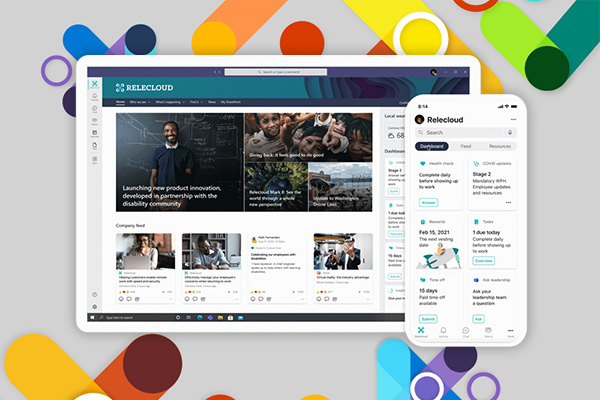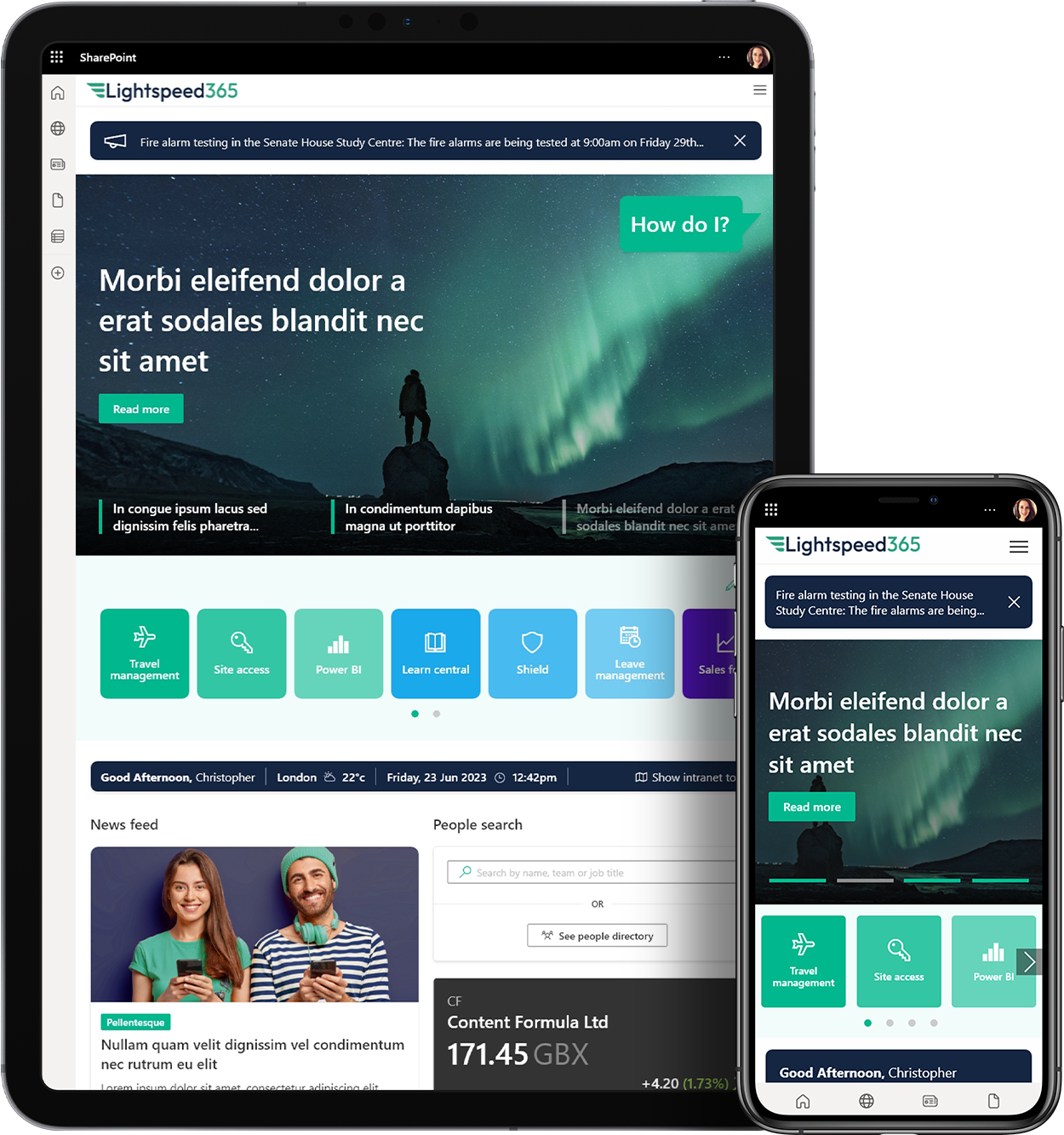Over the last few years, health and wellbeing in the workplace have increasingly come into focus, with HR functions rolling out wellness initiatives to support a wider employee experience agenda. COVID-19 and the stress it has caused has placed physical and mental health high up on the agenda, and over the past eighteen months, organisations have been active in trying to support the wellbeing of employees though the pandemic.
Supporting a healthier workforce is not just a nice thing to – a happy and healthy workforce has potentially enormous benefits, with various studies suggesting it can reduce employee absenteeism, support productivity and even decrease staff turnover. There is also research that links organisations who support wellbeing with higher employee engagement; surveys have shown that in companies which actively support wellbeing through initiatives, 89% of employees are likely to recommend it as a good place to work, compared to only 17% in companies that don’t support wellbeing.
With the combination of the focus on wellbeing and the scaling up of remote working, intranet and digital workplace teams are playing a greater role than ever in supporting employee health and wellbeing. In this post, we’re going to explore eight ways your intranet and digital workplace supports the health and wellness of your workforce.
1 Promoting wellbeing content and benefits
An obvious role that intranets and other digital communication channels can play in supporting wellbeing is promoting relevant wellbeing content and making it discoverable. On intranets that we have recently implemented, some organisations have chosen to publish content about how to stay healthy, such as providing tips on good ergonomics. Sometimes, intranet teams choose to house third party content such as factsheets about health-related matters.
An intranet or HR service portal should also provide information on health-related benefits provided by the company, including gym subsidies, cycle-to-work schemes, eye tests, health insurance and more; these may be gathered within a wellbeing portal. News items might also provide examples of what people are doing to stay healthy.
2 Online wellbeing events and activities
During the pandemic, many HR and internal comms teams organised virtual events across the digital workplace that were geared to support health and wellbeing, including mindfulness, yoga, gym and dance sessions and general social events, all run through digital channels such as Teams, Yammer and even intranets.
There have been instances of senior leaders leading fitness workouts for furloughed staff on social platforms, and companies using Yammer for people to share mental health experiences. One of our clients runs regular mindfulness sessions which can be booked through the intranet. All these events not only promote healthy practices, but also have a social side and help provide a sense of community and connection.
3 Reducing information and app overload
A major source of employee frustration is information and app overload, which can make people feel overwhelmed and even contribute to technostress. Having to open six different applications all with different passwords just to complete a relatively straightforward process, or having over 1,000 unopened emails in your inbox are not conducive to a good employee experience.
Intranets and portals that provide a single integrated digital ecosystem or front door to the wider digital workplace, underpinned by single sign-on, can help reduce overload through a one stop shop approach, helping employees feel more on top of their workload. When employees already have a lot on their plate, a great intranet or digital workplace environment can actively improve wellbeing and reduce frustration.
4 Supporting communities
Online communities and discussion forums are a great way to support employee wellbeing by providing a connection between people across your organisation. Working remotely can be lonely, particularly if you’re working alone at home, and maintaining that human connection can make a difference. Many organisations already support professional Communities of Practice, but social groups relating to non-work interests can also drive connections. From sports clubs, to recipe swapping, to sharing cat videos, online communities on intranets, within Yammer or even on Teams can help strengthen your employee network. During the pandemic, many organisations created Teams channels for more informal social interaction. Some communities can also be specifically dedicated to wellbeing areas such as running, yoga or healthy eating.
5 Wellbeing related analytics
People analytics is a growing area of interest for HR and digital workplace teams, especially with more opportunities to gain insights from the data that is generated by the increase in remote working and the use of platforms such as Microsoft Teams. Health and wellbeing are focus areas for analytics; in our personal lives, health-related data is being popularised through fitness and health trackers and information about our device usage. In the digital workplace, Microsoft MyAnalytics produces a wellbeing edition that takes information about meetings, collaboration and time spent on different systems, and comes up with a personalised report.
This is an area which we see growing in the future, with an increase in health-related reporting featuring data to avoid burn-out and stress, and to prevent mental health issues. Microsoft Viva Insights, for example, include data relating to wellbeing, while other organisations are supporting and even implementing health tracking apps that support fitness or include health diagnostic tools. There are some challenges around data privacy here, but with most organisations very mindful of these, it is possible to generate useful data that is of value to both organisations and individual employees.

6 Supporting the hybrid workplace
At the moment, the hybrid workplace is a very hot topic, particularly with the imminent return to the office, and many organisations are figuring out how hybrid working patterns are going to work in practice. The digital workplace will continue to play an essential part in successfully facilitating hybrid working, empowering employees to work from anywhere.
Before the pandemic, being able to work more flexibly across different locations was often positioned as supporting wellbeing through the ability to balance busy working and non-working lifestyles. Arguably, being able to work flexibly and remotely will still make a sizeable difference to wellbeing. For example, if you have a young family or are a carer for a family member, then the ability to better manage your hours across the week can help you avoid becoming overstretched. Simply avoiding the commute for half a week which can take up as much as three hours of a person’s day could have a tangible impact on health and wellbeing, as well as productivity.
7 Supporting dialogue
Intranets and the wider digital workplace support dialogue and provide a voice for employees through numerous channels including intranets, social platforms, apps, surveys, polls and feedback channels.
Establishing dialogue supports wellbeing in two ways. Allowing employees to express themselves is good for engagement and employee happiness in general, but more specifically, it allows leaders and HR functions to get a sense of employee sentiment and identify any issues which might be impacting wellbeing. When employees can report on issues that are impacting their welfare, employers can then make the necessary interventions. HR functions can also create regular mechanisms to get a pulse check on how the workforce is feeling. This was something that is being seen frequently during the pandemic, with many employers running polls and surveys to check in on employees and see how they are doing.
8 Reducing dangers and hazards
In some organisations and across particular sectors, health and safety is very important. Construction, mining, engineering, manufacturing, energy, utilities, transport, logistics and healthcare are just some of the sectors where there are strict safety procedures that must be followed to protect employees, and sometimes customers. Invariably, safety is promoted as a priority, and is even reflected in company values.
Digital workplaces and related tools and channels can play a part in reducing dangers and hazards. An intranet may provide basic information on safety procedures, as well as run campaigns to make employees aware of the potential hazards they face. We’ve also seen intranets that include health and safety statistics prominently on the homepage, including the time since the last incident, in order to promote a safety culture.
Mobile apps for employees to report potential dangers on site play an active role in reducing the number of incidents and raising vigilance surrounding the kind of hazards that cause accidents.

Wellbeing and the digital workplace
Employee wellbeing has never been more important, and your intranet and digital workplace tools can make an active difference. Want advice on how you can use your digital channels to support health and wellbeing? Then get in touch!



 SharePoint Products
SharePoint Products

